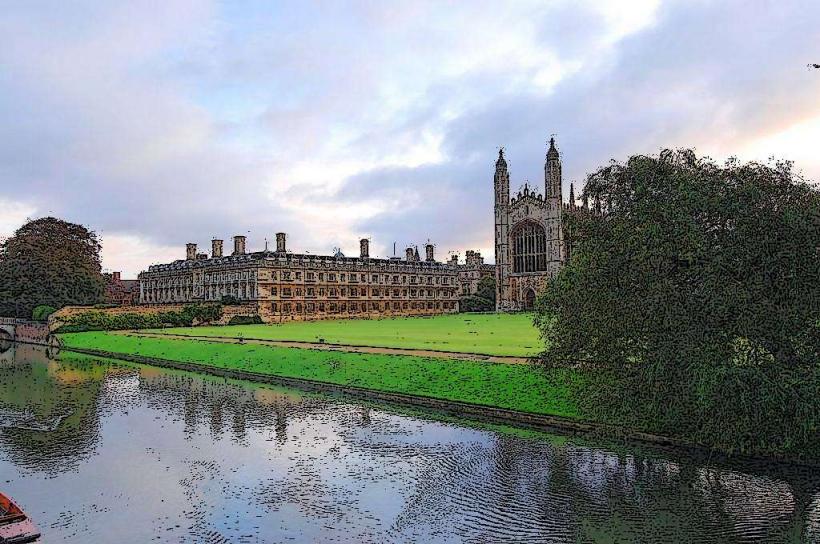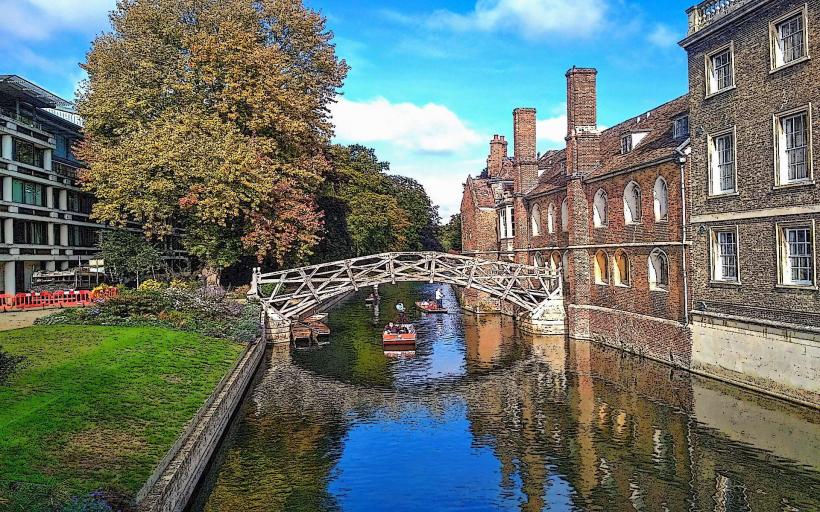Information
Landmark: Cambridge University Botanic GardenCity: Cambridge
Country: United Kingdom
Continent: Europe
The Cambridge University Botanic Garden is one of the most beautiful and significant green spaces in Cambridge, offering a peaceful and educational escape from the city. Established in 1846, the garden spans 40 acres and is home to a rich collection of plants from around the world. It is not only a place of natural beauty but also an important site for scientific research and education, serving both the university and the wider public.
History and Origins
The Botanic Garden was founded by the University of Cambridge with the aim of providing a space for teaching and research in botany. Prior to its establishment, botany was taught through field trips and outdoor lectures, but a dedicated garden would allow for more controlled study and cultivation of plants.
The garden was designed by William Hooker, the first Director of the Botanic Garden, and his vision was to create a space that would serve as a living library of plants. It was initially used for the study of plants for medicinal, agricultural, and economic purposes. The garden's early years focused on cataloging and propagating plants, with an emphasis on cultivating specimens from around the world.
Plant Collections and Features
Today, the Cambridge University Botanic Garden is a vibrant and diverse space, home to over 8,000 plant species from across the globe. The garden is divided into different sections, each with a specific focus or theme, showcasing the variety and importance of plant life.
Key Areas of the Garden:
The Glasshouses: The Botanic Garden features a series of glasshouses that house tropical, subtropical, and arid plants. These include plants from rainforests, deserts, and Mediterranean climates. The glasshouses are divided into sections, each representing a different environment, including the tropical rainforest, the arid zone, and the Mediterranean regions. The Cambridge University Botanic Garden Glasshouse is home to plants that are difficult to grow in the UK climate, including orchids, cacti, and palm trees.
The Systematic Beds: One of the most educational sections of the garden, the systematic beds display plants arranged according to their scientific classification. This area is designed to show the evolutionary relationships between different plant species, making it a valuable teaching tool for students of botany.
The Herbaceous Borders: These beautifully designed areas showcase a variety of perennial plants, including flowers, shrubs, and grasses. The herbaceous borders are carefully planned to ensure that there is always something in bloom throughout the year, creating a stunning display of colors and textures.
The Rock Garden: A peaceful area within the garden, the rock garden features plants that thrive in rocky, alpine environments. This area includes alpine flowers, succulents, and other plants that are adapted to growing in poor, well-drained soils. The rock garden is a popular spot for visitors to explore, with its carefully arranged rocks and vibrant plant life.
The Meadow: The wildflower meadow is an important feature of the Botanic Garden, providing a habitat for a wide range of native British plants. This area is especially popular in the spring and summer when wildflowers such as buttercups, oxeye daisies, and cornflowers bloom. The meadow is also home to numerous insects, birds, and other wildlife, creating a biodiverse and lively ecosystem.
The Native Plant Collection: This collection showcases plants that are native to the UK, providing visitors with a chance to see a variety of indigenous species and learn about the plants that are integral to the British countryside.
The Woodland Garden: The woodland garden is a serene and shaded area that features plants typical of woodland environments, including ferns, mosses, and wildflowers. The garden is designed to mimic the natural growth of plants in forested areas, with a focus on creating a natural habitat for woodland creatures.
The Sensory Garden: Designed with accessibility in mind, the sensory garden is a space where visitors can engage with plants through touch, smell, and sight. The garden includes plants with interesting textures, fragrant flowers, and vibrant colors, making it a particularly enjoyable area for those with visual impairments or anyone interested in experiencing plants in a more tactile way.
Educational and Scientific Role
The Cambridge University Botanic Garden is not just a space for relaxation, but also a center for scientific research and education. It plays a vital role in the university's teaching programs, particularly for students studying biology, botany, and ecology. The garden provides a living resource for academic research, helping to further our understanding of plant biology, conservation, and biodiversity.
The garden hosts public lectures, workshops, and guided tours, offering visitors an opportunity to learn about the science of plants and their role in the environment. The garden also works on various conservation projects aimed at preserving endangered species and protecting biodiversity.
Visitor Experience
The Cambridge University Botanic Garden is open to the public year-round, with special events and activities organized throughout the year. Visitors can enjoy the gardens at their leisure, whether for a peaceful walk, a picnic, or a more focused exploration of the plant collections. The garden’s visitor center offers information on the various plants and their significance, and the gift shop sells plant-related products, books, and gardening tools.
One of the most popular times to visit is in the spring, when the garden bursts into color with tulips, cherry blossoms, and other early bloomers. Summer brings a profusion of flowers and lush greenery, while autumn sees the garden transformed with vibrant foliage and the harvesting of seeds. In winter, the garden’s more evergreen areas provide a peaceful retreat, and the glasshouses continue to offer a tropical escape.
The Garden’s Role in Conservation
The Cambridge University Botanic Garden is committed to conservation and sustainability. It is involved in a number of projects aimed at preserving plant species that are under threat from climate change, habitat loss, and over-collection. Through its research and conservation efforts, the garden works to protect both rare and endangered species and to promote the use of sustainable gardening practices.
Conclusion
The Cambridge University Botanic Garden is a remarkable space that combines beauty, education, and scientific research. Whether you're a student of botany, a nature enthusiast, or someone simply looking to enjoy a peaceful day out, the garden offers something for everyone. Its vast collection of plants, beautifully designed landscapes, and educational resources make it a key feature of Cambridge's cultural and scientific landscape. The garden not only enhances the university's academic mission but also serves as a vital resource for the public, promoting a greater appreciation for the natural world and the importance of plant conservation.









